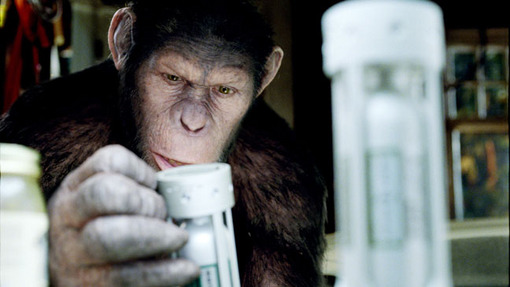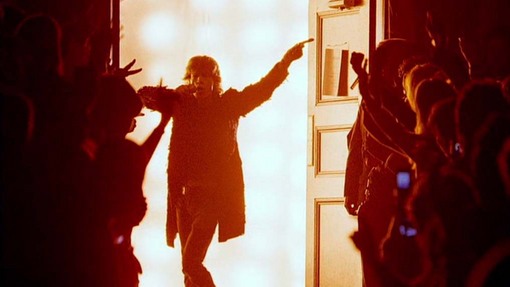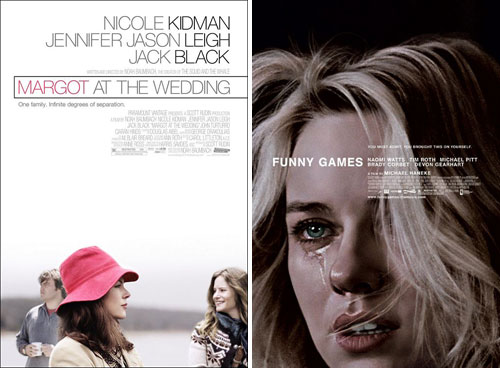View image Pete Seeger singing “If I Had a Hammer” at a Student Nonviolent Coordinating Committee Rally in Greenwood, MS, 1963. From “Pete Seeger: The Power of Song.”
(A brief review of Jim Brown’s documentary, “Pete Seeger: The Power of Song,” opening in select theaters around the country in the next few weeks, and in Seattle September 21.)
I’m a-goin’ to Berlin
To Mister Hitler’s town
I’m gonna take my forty-four
And blow his playhouse down.
— “Round and Round Hitler’s Grave” by Woody Guthrie, Millard Lampell and Pete Seeger (recorded by the Almanac Singers in 1942)
“It’ll be a little soggy but we’ll keep slogging.
We’ll soon be on dry ground.”
We were waist deep in the Big Muddy
And the big fool said to push on.
— “Waist Deep in the Big Muddy” by Pete Seeger (performed on “The Smothers Brothers Comedy Hour,” 1968)
Pete Seeger is an American legend, in a class with Paul Revere (he rang out warning), Johnny Appleseed (he sang out all over this land), and Paul Bunyan (he had a hammer — and an ax). Like all three, he’s attained mythical stature, and like the first two, he’s for real.
View image Bob Dylan singing “Only a Pawn in Their Game” at the same 1963 SNCC rally shown above. From “Don’t Look Back.”
Seeger may not always have been in synch with his times, but he has always been timeless, carrying the American folkloric tradition out of backwoods and into the mainstream. He sang old songs and gave them new life: the 1886 song “Goodnight, Irene” was adapted by Leadbelly and became a surprise commercial hit for the Weavers in 1950; ten years later, “We Shall Overcome” was revived, revised, and sung by Seeger at the first meeting of the Student Nonviolent Coordinating Committee in Raleigh, NC, and became the anthem associated with Martin Luther King, Jr., and the civil rights movement.
Seeger has been able to take songs of the past and bring them alive in the context of the present. “Round and Round Hitler’s Grave” (collected in a songbook, called “Anti-Fascist Songs of the Almanac Singers: Timely American songs based on timeless worksongs, patriotic ballads, cowboy ballads, spirituals, etc., from America’s folklore”) is of its moment in 1942. (Woody Guthrie later added a verse about Goering.) But “Big Muddy” — which begins, “It was back in nineteen forty-two” — was an anti-Vietnam war song, and is now an anti-Iraq occupation song. Could Seeger ever have anticipated that his ballad would become a relevant protest song again in his lifetime? Perhaps only in the sense that he understands mankind’s uncanny ability to keep repeating the same historical mistakes.
Seeger’s own songs — “If I Had a Hammer,” “Turn, Turn, Turn,” “Where Have All the Flowers Gone?” — well, they sounded like traditional classics the first time you heard them, didn’t they? Whether speaking (singing) to a particular time and place, or in general about the state of human beings and the planet we live on (and often both at the same time), Seeger’s work is ageless.
So, don’t expect just the usual muffled, scratchy old clips from Jim Brown’s “Pete Seeger: The Power of Song.” The images may be from the past, but the sound is vibrant and present. It begins with a quintessential Seeger singalong, and you could swear you’re sitting in the middle of the audience, surrounded by voices. As Bob Dylan says, Seeger had the ability to coax out the singer in everybody.
The paths of so many American folk legends cross in this film: Leadbelly, Woody Guthrie, Johnny Cash, Dylan, Joan Baez, Bruce Springsteen — and the last four appear in interviews, as do Seeger and members of his family. While the movie is an unabashed celebration of the life, music, politics, and humanitarianism of Pete Seeger, it’s just as much a tribute to Toshi Seeger, the Japanese-American woman who married Seeger in 1943. She’s the one, as somebody observes, who “allowed Pete to be Pete.”
“The Power of Song” reflects the essential qualities of its eponymous hero: enthusiastic, idealistic, patriotic (but not nationalistic), shamelessly earnest, maybe (as the subtitle indicates) even a little corny. And I mean that as an expression of admiration and affection. Seeger may have gone in and out of fashion — blacklisted from television for 17 years because of his brief affiliation with the American Communist Party, hailed as a prophet during the folk revival of the 1960s — but he’s never been “fashionable.” He is who he is. And aren’t we lucky to have lived to hear him?
December 14, 2012





